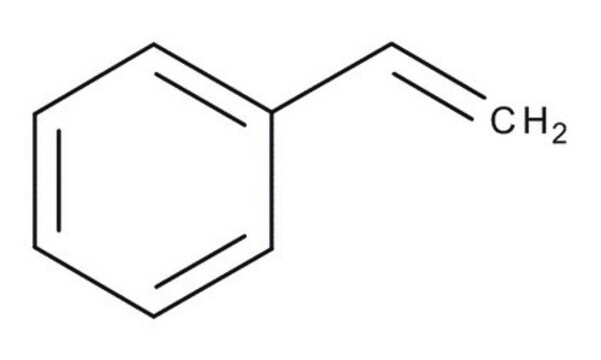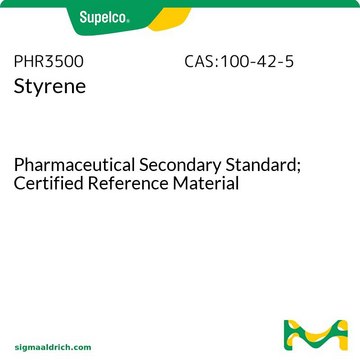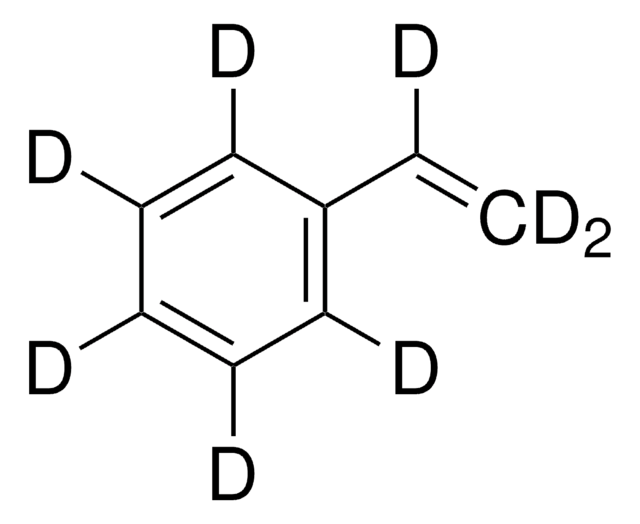47745-U
Styrene
analytical standard
Sinónimos:
Phenylethylene, Vinylbenzene
About This Item
Productos recomendados
grado
analytical standard
Nivel de calidad
densidad de vapor
3.6 (vs air)
presión de vapor
12.4 mmHg ( 37.7 °C)
4.3 mmHg ( 15 °C)
CofA
current certificate can be downloaded
temp. de autoignición
914 °F
lim. expl.
6.1 %
envase
ampule of 1000 mg
técnicas
HPLC: suitable
gas chromatography (GC): suitable
índice de refracción
n20/D 1.546 (lit.)
bp
145-146 °C (lit.)
mp
−31 °C (lit.)
densidad
0.906 g/mL at 25 °C
aplicaciones
environmental
formato
neat
temp. de almacenamiento
2-8°C
cadena SMILES
C=Cc1ccccc1
InChI
1S/C8H8/c1-2-8-6-4-3-5-7-8/h2-7H,1H2
Clave InChI
PPBRXRYQALVLMV-UHFFFAOYSA-N
¿Está buscando productos similares? Visita Guía de comparación de productos
Descripción general
Aplicación
Otras notas
Palabra de señalización
Danger
Frases de peligro
Consejos de prudencia
Clasificaciones de peligro
Acute Tox. 4 Inhalation - Aquatic Chronic 3 - Asp. Tox. 1 - Eye Irrit. 2 - Flam. Liq. 3 - Repr. 2 - Skin Irrit. 2 - STOT RE 1 Inhalation - STOT SE 3
Órganos de actuación
hearing organs, Respiratory system
Código de clase de almacenamiento
3 - Flammable liquids
Clase de riesgo para el agua (WGK)
WGK 2
Punto de inflamabilidad (°F)
89.6 °F - closed cup
Punto de inflamabilidad (°C)
32.0 °C - closed cup
Equipo de protección personal
Eyeshields, Faceshields, Gloves, type ABEK (EN14387) respirator filter
Elija entre una de las versiones más recientes:
¿Ya tiene este producto?
Encuentre la documentación para los productos que ha comprado recientemente en la Biblioteca de documentos.
Protocolos
GC Analysis of Xylene Isomers on SLB®-IL60
US EPA Method TO-17: GC Analysis of Volatiles on VOCOL® after Collection/Desorption using Air Toxics Tube
US EPA Method 8260: GC Analysis of Volatiles on SPB®-624 after Purge & Trap using "K" Trap, Fast GC Analysis
Nuestro equipo de científicos tiene experiencia en todas las áreas de investigación: Ciencias de la vida, Ciencia de los materiales, Síntesis química, Cromatografía, Analítica y muchas otras.
Póngase en contacto con el Servicio técnico









